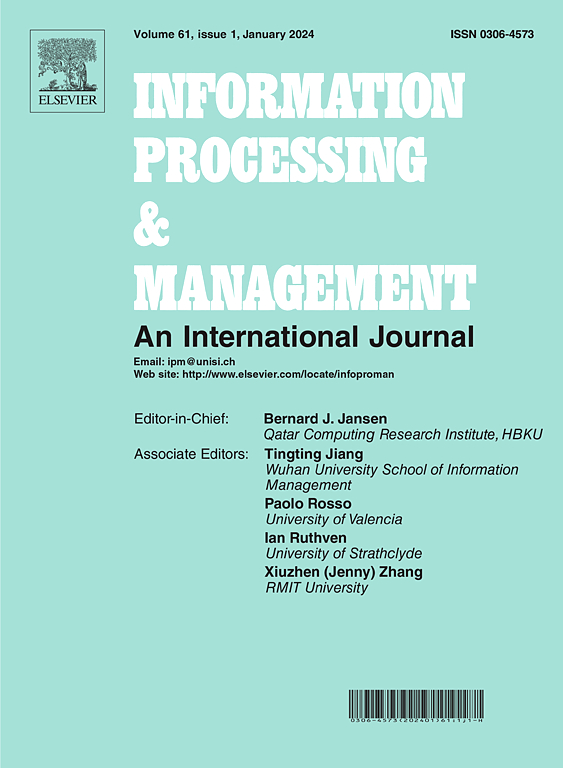利用扩散模型提高生成图像隐写的通信可靠性
IF 7.4
1区 管理学
Q1 COMPUTER SCIENCE, INFORMATION SYSTEMS
引用次数: 0
摘要
隐写术将信息隐藏在普通的封面中,可以应用于新闻、情报和医疗保健领域。有效避免了审查、拦截、泄露等风险,满足了信息安全传输的需要。扩散模型生成的图像具有内容真实性和广泛适用性,为隐蔽通信提供了高质量的掩护图像。然而,现有的方法难以在保证信息提取完整的同时生成符合主流格式的隐写图像。这可能会引起第三方的注意,增加秘密通信被发现和暴露的风险。因此,我们提出了一种基于扩散模型的隐写方法来提高通信可靠性。该方法首先使用非连续子区间除以逆累积分布函数构造一个函数,将秘密数据映射到潜在向量空间,然后使用扩散模型生成初始隐进图像。随后,基于非连续子区间的映射规则和特征,设计了有效的错误检测机制,解决了量化过程中秘密数据可能丢失的问题。最后,在秘密数据的驱动下,采用自适应量化策略,基于初始隐进图像和误差检测信息对丢失数据进行迭代校正。实验结果表明,该方法可以生成主流格式的隐写图像,同时具有较高的提取准确率。与保证完整的秘密数据提取和使用主流隐写图像格式的方法相比,我们的方法在嵌入容量方面达到了最先进的性能。本文章由计算机程序翻译,如有差异,请以英文原文为准。
Enhancing the communication reliability for generative image steganography with diffusion model
Steganography, which conceals information within ordinary covers, can be applied in journalism, intelligence, and healthcare. It effectively avoids the risks of censorship, interception, and leakage, meeting the need for secure information transmission. Images generated by diffusion models are highly valued for their content authenticity and wide applicability, providing high-quality cover images for covert communication. However, existing methods face difficulties in generating stego images that conform to mainstream formats while ensuring the complete extraction of information. This may attract the attention of third parties and increase the risk of covert communication being detected and exposed. Therefore, we propose a diffusion model-based steganographic method to enhance communication reliability. The method first constructs a function that maps secret data to the latent vector space using non-continuous sub-intervals divided by the inverse cumulative distribution function and then generates an initial stego image using the diffusion model. Subsequently, an effective error detection mechanism is designed to address the potential loss of secret data during the quantization process based on the mapping rules and characteristics of the non-continuous sub-intervals. Finally, driven by the secret data, an adaptive quantization strategy is employed to iteratively correct the lost data based on the initial stego image and error detection information. Experimental results demonstrate that the proposed method can generate stego images in mainstream formats while demonstrating a consistently high extraction accuracy rate. Compared with methods that can ensure complete secret data extraction and use mainstream stego image formats, our method achieves state-of-the-art performance in embedding capacity.
求助全文
通过发布文献求助,成功后即可免费获取论文全文。
去求助
来源期刊

Information Processing & Management
工程技术-计算机:信息系统
CiteScore
17.00
自引率
11.60%
发文量
276
审稿时长
39 days
期刊介绍:
Information Processing and Management is dedicated to publishing cutting-edge original research at the convergence of computing and information science. Our scope encompasses theory, methods, and applications across various domains, including advertising, business, health, information science, information technology marketing, and social computing.
We aim to cater to the interests of both primary researchers and practitioners by offering an effective platform for the timely dissemination of advanced and topical issues in this interdisciplinary field. The journal places particular emphasis on original research articles, research survey articles, research method articles, and articles addressing critical applications of research. Join us in advancing knowledge and innovation at the intersection of computing and information science.
 求助内容:
求助内容: 应助结果提醒方式:
应助结果提醒方式:


